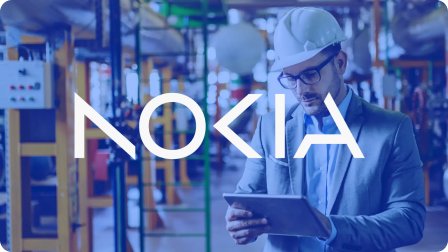What is B2B Sales Experience and How Can You Improve It

Your enterprise prospect sat through 12 demos last month. They’ve downloaded 7 whitepapers. Their inbox is stuffed with follow-ups from eager sales reps. Now, they’re on a call with your team, probably wondering if this will be just another forgettable B2B sales pitch.
According to Gartner, only 17% of B2B buyers’ time is spent meeting with potential suppliers. That’s barely 5-6% of their time with any single sales rep.* Yet in those brief windows, you’re expected to build trust, demonstrate value, and differentiate yourself.
However, while companies invest millions in B2B sales tech stacks and automation, buyers still struggle to find what they need during the purchase process. Between the endless touchpoints, we’ve somehow lost sight of what makes B2B sales truly effective: Understanding potential clients’ needs so deeply every interaction adds genuine value to their journey.
Let’s explore how leading companies are transforming their B2B sales experience from a series of transactions into meaningful partnerships. Then, we’ll show you how you can do the same.
Key Takeaways:
- There are key differences between B2B and B2C sales experiences. For instance, timelines, decision-makers, and tech needs.
- CloudTalk’s AI-powered features like Sentiment Analysis and Intelligent Call Routing transform scattered sales touchpoints into guided customer journeys that close deals faster.
- Top-performing companies are using tailored interactions, technology and focussing on guided selling leading to 40% more revenue compared to slower-growing competitors.
Make B2B sales highly personalized.
Understanding B2B Sales Experience
B2B (business-to-business) sales experience refers to how business clients interact with and perceive your company throughout the sales process. It’s all the touchpoints—from their first discovery call to signing the contract—that make them feel confident and valued in choosing your solution.
Think beyond traditional sales channels or lead distribution tools. Whether your team serves software companies or financial institutions, each industry demands its own tailored approach, built on trust, communication, and solution alignment.
For example, software companies could benefit from product-led demonstrations, while you could reach out to enterprise companies via social media like LinkedIn offering customized implementation roadmaps.
The question isn’t if your salesperson has great sales tactics and outreach, or is skilled at closing deals—it’s whether your sales experience framework can adapt to each unique buyer journey while maintaining efficiency at scale.
Differences Between B2B and B2C Sales Experiences
Your sales team just spent three months cold calling, nurturing an enterprise deal, coordinating product demos across time zones, and navigating technical requirements. Meanwhile, sales professionals in B2C closed 200 transactions in the same timeframe. The difference? The fundamental complexity of B2B selling.
As sales, ops, and IT managers, you’re caught between the need for B2C (business-to-customer)-like simplicity and the reality of enterprise sales complexity. Your tech stack needs to support extensive evaluation periods, international sales, and multiple decision-makers. Yet, it still needs to deliver the seamless experience buyers have come to expect from their consumer purchases.
Let’s break down the key differences that impact how you structure your sales operations:
Aspect
Business-to-Business Sales Experience
Business-to-Consumer Sales Experience
Decision Timeline
Long sales cycle with an average of 6-12 months
Shorter sales cycle, sometimes even minutes or a couple of days
Purchase Value
High-value contracts ($10K-$1M+)
Lower transaction values ($10-$1K)
Decision Makers
Multiple stakeholders (6-10 people on average)
Individual or household
Purchasing Decisions
Multiple stages, formal evaluation
Often impulse or need-based
Tech Requirements
Complex CRM integrations, custom workflow automation, security compliance tools
Simple payment processing, basic inventory management, standard security measures
Communication
Multiple touchpoints, technical discussions, ROI validation
Direct marketing, emotional appeals, quick responses
Relationship Type
Long-term partnerships, account-based management, ongoing service levels
Transactional, brand loyalty, general support
Data Requirements
Detailed analytics, compliance tracking, Integration capabilities
Basic customer data, purchase history, personal preferences
Pro tip
Pro tip: Boost lead generation with an advanced B2B call center solution with automation features. Call up to 3X more clients daily, improve lead generation and customer experience, close more deals, and retain customers.
Strategies to Enhance B2B Sales Experience
Your sales team hits their numbers, but prospects complain about a fragmented buying experience. Your CRM is packed with features, yet reps struggle to provide quick answers during crucial sales moments.
Meanwhile, your competitors win deals with seemingly simpler processes, even though their products don’t match your capabilities. Here’s what you can do:
Personalize Through Data Insights
Companies that grow faster drive 40% more revenue from personalization than their slower-growing counterparts. For B2B organizations, effective personalization starts with leveraging comprehensive data analytics. The challenge? Only 8% of B2B organizations currently deliver highly personalized marketing—yet among these leaders, three-quarters report growing market share.
Leading companies are building rich customer signals that go beyond traditional data. They combine multiple data sources spanning customer intent, preferences, and buying patterns to create truly tailored interactions. Some innovative approaches include:
- Tracking hiring patterns to predict buying needs (e.g., a manufacturer hiring data scientists might signal potential tech infrastructure purchases)
- Evaluating laws and tech capabilities
- Monitoring recent acquisitions and public strategic initiatives
- Gathering insights from customer interviews and focus groups
But data alone isn’t enough—top performers turn these insights into prescriptive actions. Rather than just predicting customer behaviors, they use data-driven tools to determine what solutions to offer, how to message them, and where to engage prospects in real time. This shift requires moving away from internal sales funnel metrics (like “introductions” or “negotiations”) toward customer journey-focused measurements (such as “awareness” or “evaluation”).
The payoff for getting personalization right is substantial. Companies with strong customer analytics are 1.5 times more likely to achieve rapid growth, with potential earnings increases of 15-25%.
Leverage Technology for Seamless Communication
According to a study from 2021, 92% of buyers now prefer digital engagement—a 17% increase since 2020. What’s more telling is that 79% of sellers have embraced this change, recognizing how virtual selling enables faster customer communication, reduces costs, and expands their reach to B2B customers.
Yet in this rush to digitize, many B2B companies struggle to maintain the personal touch that defines successful B2B relationships. The solution lies not in simply adopting more tools, but in implementing coordinated sales plays via digital interaction. This includes:
- Clear communication cadences between sales teams and B2B customers
- Coordinated messaging across marketing and sales touchpoints for outreach
- Real-time performance monitoring through Real-Time Dashboards
- Structured frameworks for coaching and evaluation
Since, the traditional handoff of qualified leads from marketing to sales is becoming increasingly obsolete—leading companies are responding by building integrated communication ecosystems that span multiple channels:
- Industry influencer conversations
- Peer recommendation networks
- External review platforms
- Vendor digital properties
- Direct sales interactions
- Successful case studies
When executed well, this technology-enabled approach aligns seamlessly with the principles of customer-led marketing, transforming scattered touchpoints into confirmed purchasing decisions.
Provide Value Beyond the Sale
Strong leaders understand long-term success doesn’t depend on the initial sale. Instead, it depends on consistently delivering value throughout the entire customer lifecycle.
This approach transforms traditional vendor-client dynamics into collaborative partnerships focused on mutual success. This includes:
- Anticipating challenges before they impact the customer’s business
- Providing industry insights, best practices, and innovative solutions
- Ensuring your solutions continue to support the customer’s evolving business objectives
- Creating detailed roadmaps for implementation, adoption, and ROI achievement
- Regularly gathering feedback and adapting services to meet changing needs
The impact of this approach is measurable. Companies that excel at providing post-sale value typically see higher loyalty, increased share of wallet, and more referrals from satisfied clients. This creates a virtuous cycle where deeper customer relationships lead to better insights, enabling even more value delivery.
insights
💡Unique insight: Measuring and analyzing sales experience success
Instead of focusing solely on sales metrics, leading companies track indicators like:
- Customer success scores: How well customers achieve their goals with your solution, measured through satisfaction ratings and success metrics.
- Implementation effectiveness: The speed and precision of deploying your solution into the customer’s ecosystem.
- Time-to-value metrics: How quickly customers start seeing real benefits after purchasing.
- Solution adoption rates: The percentage of customers actively using your product’s key features.
- Customer advocacy levels: How often and enthusiastically customers recommend your solution to others.
These KPIs help track and improve your B2B sales experience beyond traditional sales metrics.
Implementing Guided Selling to Elevate the Sales Experience
Between personalized data insights, seamless communication tools, and value-driven strategies, your sales team has all the pieces for success. Yet your top rep just lost a deal she was certain about, while others struggle to navigate complex buying cycles consistently.
Somewhere between your sophisticated tech stack and your talented team, deals still fall through the cracks. This is where guided selling transforms scattered touchpoints into precise, repeatable journeys—turning your sales experience from a maze into a clear path forward.
What is Guided Selling?
Guided selling helps your team and prospects navigate every turn of the buying journey together. At its core, guided selling combines AI-driven technology, proven sales methodology, and buyer insights to create structured pathways through complex B2B purchases.
According to Gartner, by 2025, 75% of B2B sales organizations will augment their traditional playbooks with AI-guided selling solutions. This shift means sellers can no longer rely solely on intuition—they must embrace data-driven approaches to effectively manage their sales cycles.
For example, when a manufacturing company is evaluating new ERP systems, guided selling might first assess their production volume, integration requirements, and compliance needs. Rather than overwhelming them with feature lists, the system guides both seller and buyer through a structured evaluation that builds confidence through relevance.
But guided selling isn’t just about digital pathways. As Elizabeth Beard, director analyst at Gartner notes, “Progressive sales organizations are already using AI to determine what content resonates with buyers and then recommend tools and content to share with the buyer at the moment.”
This helps your team understand when to engage and how to add value at each interaction point.
Steps to Implement Guided Selling
Implementing guided selling is about creating a systematic approach that combines AI capabilities with human expertise. Here’s how to transform your B2B sales experience with guided selling:
Build Your AI-Powered Foundation
Starting with the right technological foundation is crucial. Companies are deploying AI capabilities that can analyze conversations, understand customer intent, and provide real-time guidance.
For example, using AI-powered Sentiment Analysis during calls helps sales reps gauge customer reactions and adjust their approach in real-time. This technology can detect subtle shifts in tone and engagement, allowing reps to pivot strategies before losing a potential deal.

Design Your Customer Journey Maps
The most effective guided selling implementations start with clear customer journey maps that anticipate and address key decision points. For instance, when a healthcare provider evaluates new software, they might need different paths based on their size, specialty, and compliance requirements. Using an intelligent Call Flow Designer, you can create dynamic conversation paths that adapt to each prospect’s unique situation, ensuring every interaction builds toward their specific needs and concerns.

Develop Your Knowledge Framework
Success in guided selling depends on systematically capturing and deploying insights across your organization. By Call Recording and analyzing sales conversations, you can identify patterns in successful deals and develop a playbook of proven approaches.
For instance, top-performing teams often combine customer interaction data with market intelligence to create detailed buyer personas and scenario-based guidance. This living knowledge base helps new reps get up to speed quickly and ensures consistent, high-quality interactions across the team.

Enable Your Sales Team
Transform your sales team from product experts into strategic advisors. This shift requires more than just technical training—it demands a new mindset. Organizations seeing the best results pair AI tools with intensive coaching on consultative selling techniques. For example, using Call Monitoring capabilities allows sales managers to provide real-time guidance during conversations.

Measure and Optimize
Implementing guided selling requires continuous measurement and refinement. Begin by establishing clear metrics that track both process efficiency and outcome effectiveness. Using a Real Time Dashboard lets teams identify winning patterns and systematically improve their guided selling approach.

At Least 50% of Your Prospects Aren’t A Good Fit*
The future of B2B sales is being shaped by leaders who understand the changes in customer experience. They’re not just adopting AI-guided selling because it’s innovative. They’re embracing it because it enables them to cut through the noise and deliver what their target audience actually needs: Clarity, confidence, and value in every interaction.
Modern AI-powered platforms like CloudTalk represent this evolution in action. For example, when Sentiment Analysis helps a rep adjust their approach mid-conversation, or when Intelligent Call Routing connects prospects with the perfect expert instantly. Or maybe when Call Recordings automatically transform conversations into actionable insights—they become the building blocks of meaningful customer relationships.
With the right combination of technology, strategy, and human expertise, you can deliver experiences that stand out in today’s crowded B2B marketplace.
Close Up to 3x More Deals Faster
Sources:
FAQs about B2B sales experience
What is B2B sales experience?
B2B sales experience encompasses all touchpoints between your company and business buyers—from initial discovery to final purchase.
Why is the B2B sales experience important?
Exceptional B2B experiences directly impact retention and growth. Companies delivering personalized experiences are 1.5x more likely to achieve rapid growth.
What strategies can improve the B2B sales experience?
Transform your B2B sales through AI-guided selling solutions, data-driven personalization, and seamless communication tools that help you deliver value at every interaction point.
What are the biggest challenges in delivering a great B2B sales experience?
Coordinating multiple stakeholders, managing complex buying cycles, and maintaining personalization at scale pose major challenges for B2B sales.
How can CRM tools improve the B2B sales experience?
Modern CRM tools with AI capabilities help track customer journeys, predict needs, and orchestrate personalized interactions.





















